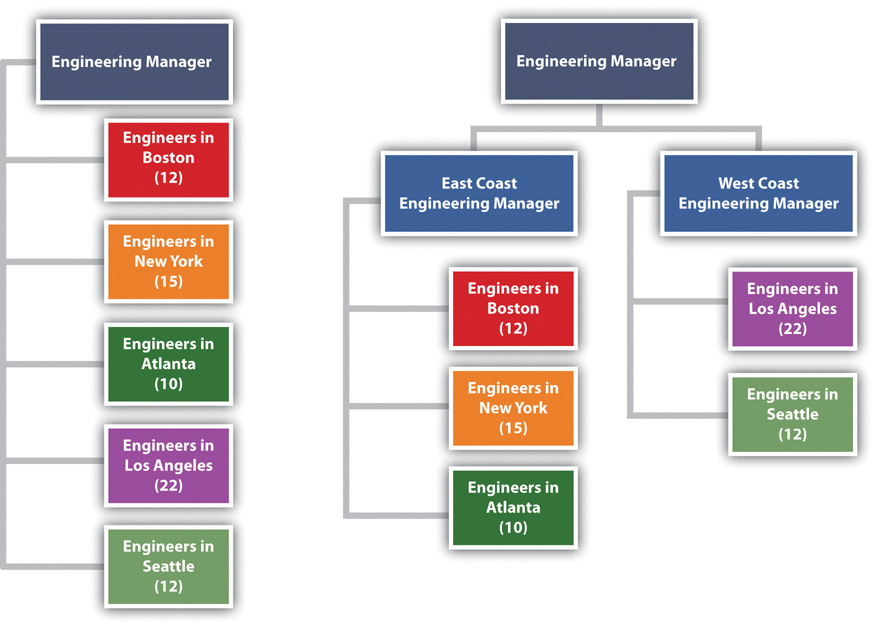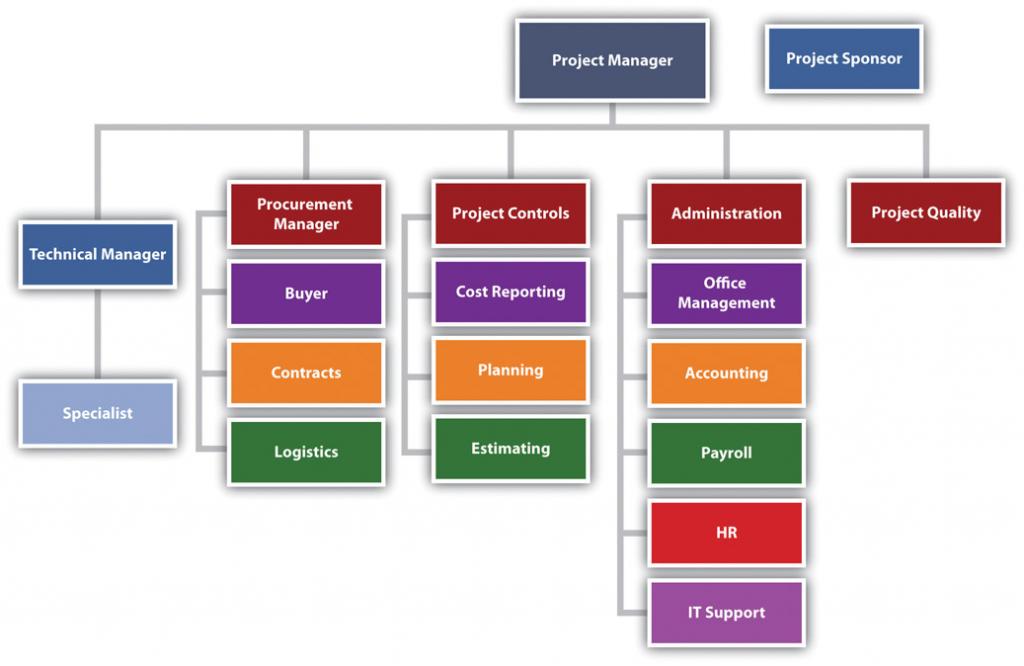3.2: Project Organization
- Page ID
- 4898
Learning Objectives
- Identify the various functions represented on a project.
- Analyze and evaluate the influence of organizational structure on project functions.
- Design a project organizational chart for various project complexity profiles.
There is no single organizational approach to projects. Each project is organized to accomplish the work effectively and efficiently. Several factors influence the organizational approach to execute a project. The complexity profile of a project, the culture of the parent organization, the preferences of the project manager, the knowledge and skills of the team, and a parent organization with a project management office are examples of factors that influence the project’s organization.
In developing the project organizational structure, the project manager considers the span of control for each manager. The span of control represents the number of people reporting to a manager. For example, the project manager does not want all the engineers on a project reporting to the engineering manager and assigns senior engineers to report to the engineering manager with other engineers reporting to the senior engineers.
The engineering manager can organize the engineering reporting structure so that the various engineering discipline managers would report to him or her. For example, the structural, electrical, and mechanical engineering team leaders would report to the engineer manager. On a larger, more complex project, the engineer manager may establish area team leaders and have the structural, electrical, and mechanical engineers report to an area team leader. If the project is geographically dispersed, with the engineering office staff in different cities working on the project, then structuring the engineering function by area provides better coordination and control (see Figure 3.1 “Decreasing Span of Control by Increasing Levels of Reporting”).
Figure 3.1 Decreasing Span of Control by Increasing Levels of Reporting

The organization on the left has seventy-one engineers reporting to the same person. The organization on the right creates two additional positions and reduces the span of control to thirty-seven and thirty-four, respectively.
Most projects have similar functions that are important to successfully managing the project. Included among these are the following:
- Sponsor
- Project manager
- Controls
- Procurement
- Technical management
- Quality
- Administration
Figure 3.2 Typical Project Organization

On smaller projects, more than one function can be managed by one person. On larger projects, large teams may be needed to accomplish the work within the function.
Project Sponsor
The project sponsor is outside the day-to-day operations of the project and has the organizational authority to provide resources and overcome barriers for the project. The project sponsor is typically a leader in the parent organization with an interest in the outcome of the project. As a leader in the parent organization, the project sponsor can provide input into the project scope and other documents that define project success. The guidance and support from the project sponsor enhances the ability of the project to successfully meet the parent organization’s objectives.
Southern Training Center Organization
A training organization in South Carolina assigned a project sponsor to every project. For smaller projects, the regional manager fulfilled the role of project sponsor. On larger, more complex projects, the operations manager was the project sponsor. The vice president was the project sponsor of the three or four most complex projects, and the president was the project sponsor only on projects with a high degree of political risk. This approach to assigning project sponsors assured that each project had an organizational advocate that could address barriers and provide direction and resources. The project sponsor, in this organization, developed a relationship with a senior representative of the client organization, reviewed monthly reports, and conducted thorough quarterly reviews.

